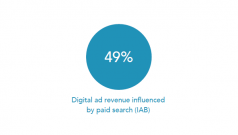Düsseldorf-based metasearch firm trivago (NASDAQ TRVG - majority owned by Expedia) has released results of a study of 2017-2018 search data for 2018 travel for selected major markets in Europe, Latin America (including Mexico), North America (USA and Canada), and Oceania.
Top 3 destinations by market:
Europe
- London
- Paris
- Amsterdam
Latin America
- Cancun
- Rio de Janeiro
- Sao Paulo
North America
- NYC
- Las Vegas
- Orlando
Oceania
- Sydney
- Melbourne
- Auckland
Diversity of destinations by continent: Share of trips to continent's top 100 destinations
- Europe 48%
- Latin America 70%
- North America 64%
- Oceania 83%
Domestic share of inbound travelers:
- Europe 56%
- Latin America 87%
- North America 71%
- Oceania 87%
International (within continent) share of inbound travelers:
- Europe 36%
- Latin America 9%
- North America 6%
- Oceania 5%
International (other continent) share of inbound travelers:
- Europe 7%
- Latin America 7%
- North America 23%
- Oceania 9%
Distribution of all travelers by length of stay:
- Weekend travelers - search for weekend travel dates 43%
- Weekday travelers - search for short stays during the week 43%
- Long-stay travelers - search for stays of 6 days or longer 15%
Predominant traveler type by location of origin:
- Domestic: 50% weekend
- International - same continent: 42% weekday
- International - different continent: 51% weekday
Location of origin by long-stay travelers:
- Domestic 9%
- International 26%
Most important factors in booking hotels, based on filters used in trivago search*:
- Price 54%
- Star rating 29%
- User ratings 21%
- Top amenities 15%
*Filter use was consistent across continents.
Average clicked price by destination:
- Europe € 165
- Latin America € 99
- North America € 178
- Oceania € 162
Search filter settings for star ratings:
- 1* + (8%)
- 2*+ (6%)
- 3*+ (25%)
- 4*+ (37%)
- 5* (25%)
Search filter settings for user ratings:
- Poor+ (1%)
- Satisfactory+ (6%)
- Good+ (16%)
- Very good+ (32%)
- Excellent (46%)
Most popular amenities searched for:
- Included breakfast 33%
- Pool 21%
- Free Wi-Fi 20%
Average length of stay (days):
- Europe 3.4
- Latin America 3.5
- North America 3.3
- Oceania 2.7
Most popular time to travel:
- Europe: Summer (August peak)
- Latin America: Summer, Winter (July and January peaks)
- North America: Summer (July peak)
- Oceania: No clear seasonality
Average booking-to-departure interval (days):
- Overall: 51
- December (across continents): 59
- Summer (Europe): 56
=========================================================
Some observations:
- Caveat 1: These numbers lump together leisure, business, VFR and all other kinds of travel shopped for via metasearch. Be careful about drawing conclusions re tourism.
- Caveat 2: These numbers contain no data for Asia, and would likely be much different if outbound trips from Mainland China were included.
- Compared with destinations on other continents, less popular European destinations get a larger aggregate share (52% for those below top 100) of searches. Are European destinations doing better marketing than other destinations, are there larger numbers of attractive destinations in Europe, or is Europe simply the most compact continent?
- Europe's having the lowest share of domestic trips (56%) and highest share of international-within-continent trips (36%) could be related to geography (compactness - short travel times, low airfares) and/or business travel between company locations in different countries.
- trivago's defining of North America as USA and Canada only - putting in Latin America Mexico, which is the USA's #2 international market after Canada - almost certainly accounts for North America's much larger share of "International - Other Continent" travelers (23% vs 7-9% for the other continents).
- Business travelers likely account for much or most of the 43% Weekday Travelers.
- The Long Stay Travelers stats aren't broken down by continent, but both North America and Oceania being long-haul destinations for most of the world probably skews toward International (26%) vs. Domestic (9%).
- Universal desire for a good hotel price isn't surprising, but that only 21% of consumers were interested in ratings by previous guests is. Would be interesting to see the geographical distribution of that statistic.
- Lower-priced (fewer stars) and lower-rated (Good and below) hotels are included in healthy shares of searches. Content of reviews could make or break these properties.
- With included breakfast being #1 amenity searched for, any hotel not offering same should consider rejiggering rates to permit that.
- Except for unseasonal Oceania, warm season is when travel peaks in both northern and southern hemispheres. That has marketing implications for northern-hemisphere hotels in winter.
- Would have been useful to see a finer breakdown of booking intervals. Those 51-59 day averages are likely hiding a mix of very long and very short booking intervals that vary by hotel location, guest location, season, price , leisure vs. business and other factors.

 - David
- David




Comments on How travelers use hotel metasearch